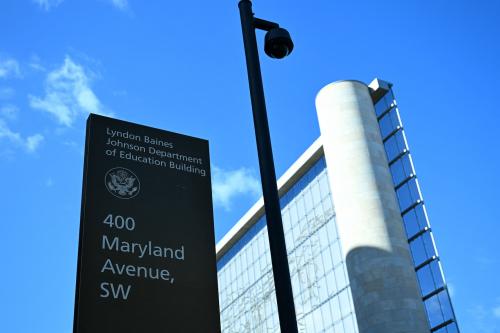In Tuesday’s State of the Union, Barack Obama proposed to make community college as free and universal as high school undoubtedly does have a surface attraction. Educational attainment is crucial to the economic success of an individual, and when Americans get a good education their children also tend to become better educated and do well.
It’s true as well that community colleges can be an important first rung up the higher education ladder for many young Americans from lower-income households, and an associate degree from a community college typically provides a boost to the graduate’s income. Compared with a four-year degree, these colleges provide an alternative and less expensive two-year credential. For some, an associate degree from a community college is a much cheaper alternative to the first two years of a four-year institution and gives those students transferable course credit to use at a four-year university – something the President’s proposal would encourage.
President Obama urges Congress to make community college tuition free for all young Americans, through a proposed $60 billion (over 10 years) cost-sharing program with the states.
So, given the important role of community colleges, isn’t that a good idea? Unfortunately not, for several reasons.
For one, the plan is badly targeted. Covering the full tuition of all community college students would mean middle-income, and even upper-income, students would get hefty subsidies, even though many do not need the help. Meanwhile, many lower-income students at community colleges would still not have the money to cover the non-tuition costs, such as books, supplies and transportation – and room and board for those not living at home. These costs usually dwarf tuition at a public community college – annual total costs averages over $16,000, while free tuition would account for only about one-fifth of that. True, lower-income students can qualify for Pell grants, but the maximum this year is $5,730, making community college a financial challenge for many, even if tuition were free.
Rather than spend $60 billion to make tuition free to rich and poor alike, a better approach would be to apply an income test and make any new federal program a sliding-scale contribution to total costs.
What’s more, community college is usually a dead end.Rather than being a firm first rung on the higher education ladder, for too many, community college turns out to be a broken rung. Just 20% of students who begin a two-year public community college program actually graduate within 3 years, and typically only 60% of enrolled students return the following year. As for being a low-cost gateway to a successful four-year college, just 15% of students entering community colleges earn a bachelor’s degree within 6 years.
So rather than putting so many eggs in the flimsy community college basket, it would be wiser to help states and school districts provide a fuller range of opportunities at the high school and college levels, such as professional credentials, apprenticeships and high-school career academies.
The plan could also add to the undermatching problem. A grave concern about higher education in America is that many high-performing high-schoolers, especially from less-affluent African-American and Hispanic households, do not apply for challenging universities for which they actually have the academic ability. Instead, many such young people settle for community college or less rigorous four-year institutions. This is a phenomenon known as “undermatching.” This happens for several reasons, including concerns about the financial risks to the student and his or her family. Undermatching widens the education gap between racial groups, and between richer and less-affluent families.
An unintended consequence of providing free tuition at only community colleges is that it would likely add to undermatching. That’s because many smart high-schoolers who come from minority or less-affluent families, or who are the first in their family to go to college, would for financial reasons be even more likely to opt for community college rather that a rigorous four-year college.
If President Obama can convince Congress to provide funds for a college proposal, a better approach would be to enhance income-based Pell Grant funding for the full range of higher education options, rather than trying to steer students to community colleges.
Better still, the President should foster steps to bring down the cost of higher education.Rather than adding subsidies to one part of higher education, he could make more progress towards his goal of making college affordable by giving more enthusiastic backing to new, low-cost competitors to traditional colleges and universities.
Thanks to new business models and the creative use of online education and other innovations, many of today’s middle-schoolers and even high-schoolers may have the chance of customized higher education at a fraction of today’s costs. But such things as the outdated accreditation system are holding back this potential revolution in higher education. President Obama would be much wiser to use his political capital to spur competition and real cost reduction in higher education rather than subsidizing community college tuition.
The Brookings Institution is committed to quality, independence, and impact.
We are supported by a diverse array of funders. In line with our values and policies, each Brookings publication represents the sole views of its author(s).



Commentary
Op-edObama’s SOTU Free College Plan is Bad for Poor Americans
January 20, 2015